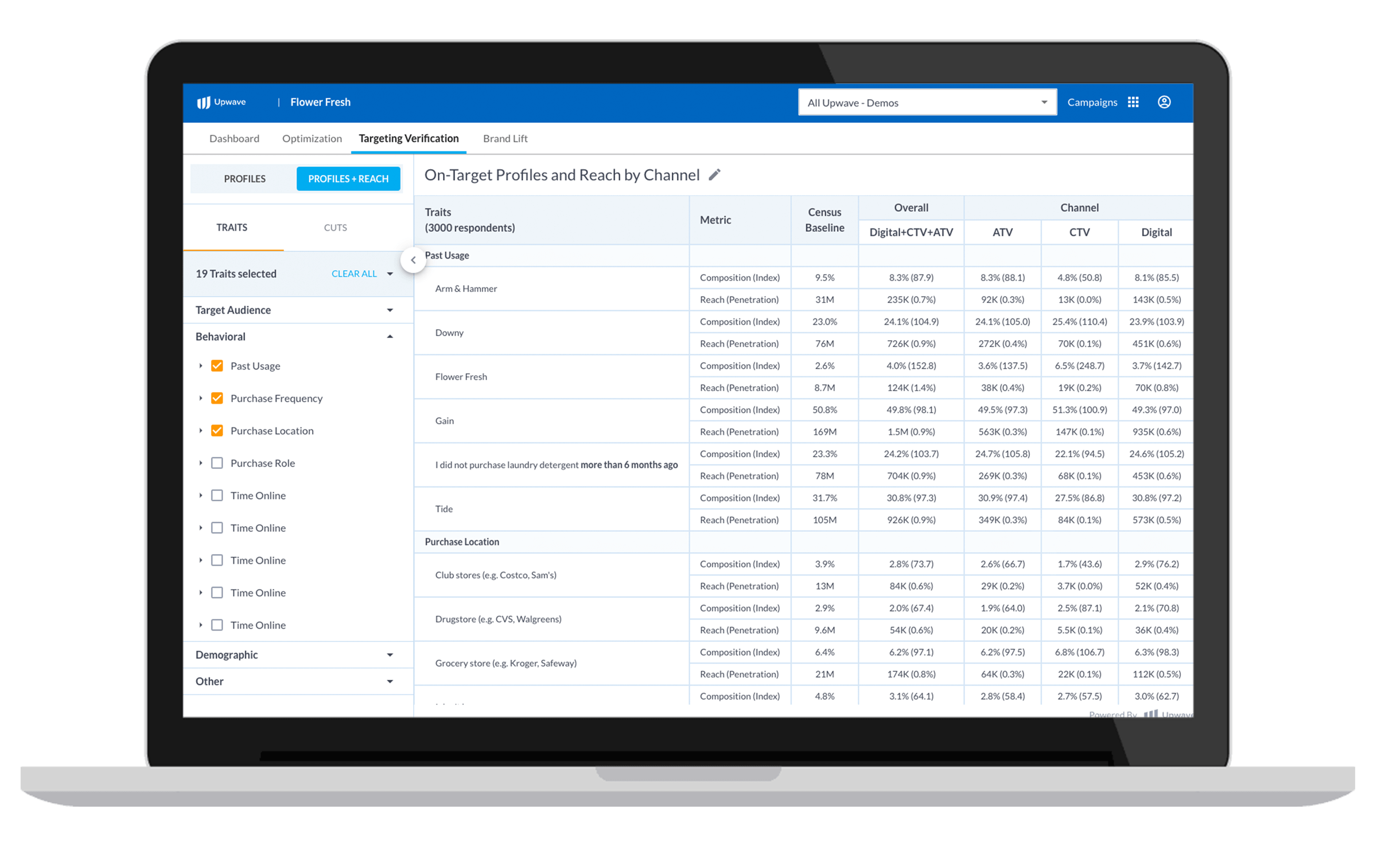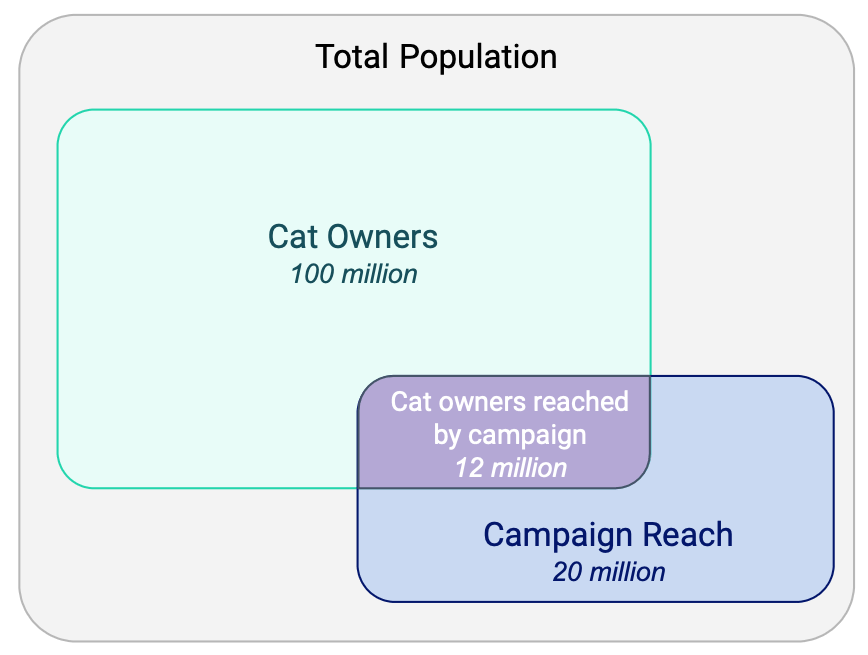Brand campaigns aren’t one-dimensional. They’re complex and creative and designed to change minds and behaviors across diverse audiences engaging with all sorts of media. Yet legacy measurement platforms remain stuck in a one-dimensional world, relying on small groups of paid participants which ultimately give a skewed view of reach and lift.
As campaigns expand across CTV, linear, digital, and other fragmented channels, and as targeting becomes more nuanced, advertisers need more than just age and gender breakdowns to truly understand how well their media buys are reaching target audiences. In particular, advertisers need holistic insights that reveal both targeting effectiveness (did my campaign reach the right audience?) and scale (was the reach significant enough to drive market impact?) in order to optimize their media buys and enhance campaign ROI.
With our latest innovations, On-Target Profiles and Reach, Upwave continues our commitment to providing brand advertisers with the tools to understand campaign performance from many different angles – beyond simply age and gender – in real-time.
Introducing On-Target Profiles
Upwave’s On-Target Profiles – previously known as Targeting Verification – provides the first critical piece of the targeting puzzle: measuring effectiveness. Using real attitudinal data and machine learning, On-Target Profiles help advertisers understand the accuracy of their audiences by establishing a census rep baseline for the unique target audience, and measuring the makeup of the population reached by the campaign against that baseline.
These insights reveal whether your campaign is effective when it reaches its target audience, and efficient at reaching that audience. But you still need to know whether your campaign has the scale required to drive a measurable impact in the market.
Introducing On-Target Reach
That’s where our latest innovation, On-Target Reach, comes into play. The industry-first metric helps brand advertisers determine the percentage of their total target audience reached by any campaign. Using On-Target Reach, advertisers can better assess whether their campaign has the scale to deliver meaningful impact within a target audience.
To calculate On-Target Reach, Upwave leverages its comprehensive audience response and machine learning platform to determine:
- Target Population Size – How many individuals in the Target Audience exist in the entire population
- Campaign Reach – How many total people were reached by a campaign
- In-Target Reach – How many individuals in the Target Audience were reached by a campaign
The In-Target Reach is then divided by the Target Population Size to determine On-Target Reach.
On-Target Reach in Action
Take for example a campaign for a cat food brand targeting all cat owners:
- The number of cat owners within the total population is estimated to be 100 million people.
- Of the 20 million people reached by the campaign, 12 million are cat owners.
- By dividing 12 million cat owners reached by 100 million cat owners total, we know that the On-Target Reach for the campaign is 12%.
While this may just seem like an academic calculation, On-Target Reach offers real insights that can help drive tangible optimization decisions. Without knowing On-Target Reach, brand advertisers can’t determine the impact a campaign truly has within the target audience.
Sticking with our cat owner example, let’s take a look at two campaigns for a brand of cat food:
Both campaigns drove the same 2 percent lift. Campaign A had a 60% In-Target Percentage and Campaign B had a 45% In-Target Percentage. Based on just these two data points, it would be easy to conclude that Campaign A was superior, but On-Target Reach offers an even more holistic picture.
- The Target Population Size is estimated to be 100 million people.
- The campaigns reached 20 million and 40 million people respectively.
- Campaign A had an In-Target Reach of 12 million while Campaign B, even with a lower In-Target Percentage, had an In-Target Reach of 18 million.
Based on a holistic view of the respective campaigns, we can see that Campaign B had the higher On-Target Reach and was, therefore, 50% more effective.
Key Takeaways
It is more important than ever not to just count people, but know who you’re counting.
On-Target Profiles and Reach work together across fragmented media channels to reveal whether your campaign is effectively and accurately reaching the intended audience, and whether the reach is significant enough to drive real market impact within that audience.
Together, these industry-first insights help advertisers make the correct trade-offs between campaigns that have efficient targeting and campaigns that may have less accurate targeting, but could drive impact at a larger scale. Equipped with this holistic view of campaign targeting and reach, advertisers are able to truly determine campaign ROI and reduce media waste.




